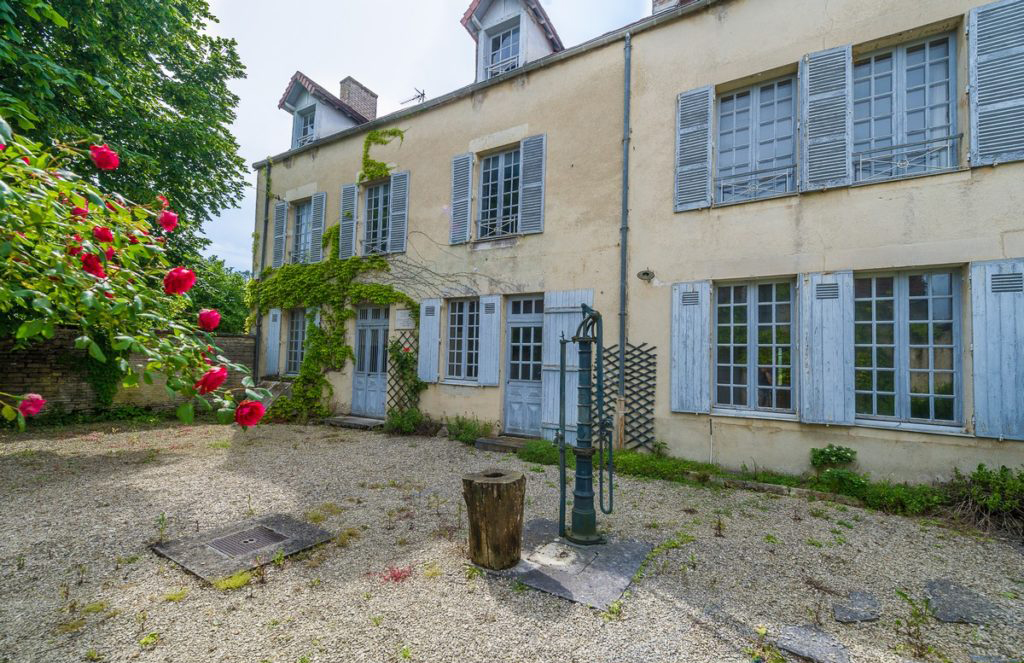
Joe Sofranko / Oregon Shakespeare Festival
The Oregon Shakespeare Festival in Ashland returns for another season starting on Tuesday. With new leadership and stable financial footing after the COVID-19 pandemic, the theater is ready to welcome back audiences for a full 10-show season.
On a recent day at the Angus Bowmer Theatre, crews prepared for the 2024 season. Large sections of a castle that resemble black stone were tied into the rigging and lifted into the rafters above.
Actor Kevin Kenerly is playing the namesake role in Shakespeare’s “Macbeth,” the first show opening this season.
Kenerly has performed in every theater at OSF, and knows all of the quirks that actors have to take into consideration when working there. One of those involves making sure actors move around the stage so that everyone is able to see them.
“There’s also a space right about where that little cone is in the center of the stage,” he said, pointing from a small room above the audience seating. “That sounds like a really lovely spot. You stand on it and you speak into the space, but it’s dead. It literally sounds like you’re whispering if you speak from that space.”
Kenerly has been an actor at OSF for 29 years. He stayed because it was easy to learn stagecraft by working with other actors, some of whom had been performing for twice that long.
“We are a unique institution. We are in the middle of nowhere and people fly across the world to come and visit us and buy tickets to the seven to 11 shows we are doing,” he said.

Joe Sofranko / Oregon Shakespeare Festival
Another OSF veteran returned to Ashland for the 2024 season. Artistic director Tim Bond was the associate artistic director at OSF under Libby Appel until 2007. He said the festival’s productions are a balancing act between performing Shakespeare and introducing new plays to the stage.
“It was a company really committed to classics and doing Shakespeare, obviously, and a few new plays,” he said. “But then we really started working on bringing more diverse playwrights, more diverse actors into the company and designers as well.”
Back then, Bond said, the company worked hard to bring in new voices to the theater space. Twenty years ago, he started a successful career development program.
“That brought us many, many administrators, artists and artisans, many of whom are still with us actually on staff, and then many who I’ve met all over the country,” he said.
Bond is hoping to restart that program in 2025, as well as other programs and initiatives that took a backseat during the pandemic. One of those is improving OSF’s community engagement.
The organization’s rocky recovery has threatened Ashland’s tourism economy. Katharine Cato from Travel Ashland said her organization has shifted toward promoting other reasons to visit, including wineries and outdoor recreation. According to a 2021 survey of visitors, more people listed restaurants or outdoor activities as a motivator to visit than OSF.
“It isn’t necessarily healthy to have all our eggs in one basket,” Cato said. “And that, at one time, was OSF. But things broke open during the pandemic.”
OSF is bringing back its business alliance to collaborate on events. It’s also restarting its volunteer programs. Bond said he understands the city and the theater rely on each other to thrive, and that means making sure everyone is involved.
“I have a lot of friends here and a lot of old associates from all the years I was here that I’m reconnecting with,” Bond said. “All of us on staff are very keenly aware of how we can connect and collaborate more with the community.”
In 2023, OSF held emergency fundraisers to raise around $10 million to keep the theater running. Bond said the company is now on more stable financial footing.
It’s had to work on convincing people to return to the theater after being gone for so long. So far, that’s been successful, he said.
“We’re projecting that we’ll be 33% larger in our audiences this season than last year. So far, we’re on track, but we’ve got a long way to go.”

Joe Sofranko / Oregon Shakespeare Festival
Bond is excited for this season to bring the theater back to what it once was. He said this is the first year that OSF feels like it was back in 2019.
“It’s really important for people to know that coming in community with others has been taken away from us through the pandemic,” he said. “And the theater is one of the great ways to get that back. And when you get it back, you will realize how much you’ve been missing it.”
For this and related articles, please visit OPB.com
























